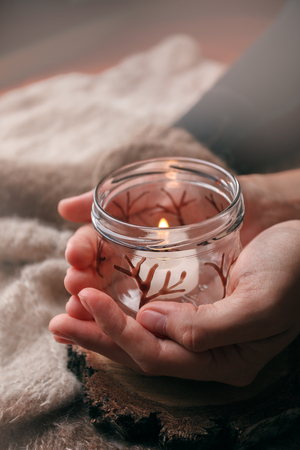1. Understanding Lucid Dreaming in British Context
In the tapestry of British culture, dreams have long held a place of fascination and inquiry, weaving through folklore, literature, and spiritual practice. Lucid dreaming—wherein the dreamer becomes aware of and can sometimes control their dreams—has particularly captivated the British imagination. Historically, references to vivid and conscious dreaming appear in medieval texts, with mystics and poets such as William Blake exploring the boundary between waking life and the world of dreams. In more recent times, lucid dreaming in the UK has become a subject of both academic study and popular intrigue, drawing on Britain’s rich tradition of introspection and spiritual exploration. From classic tales of spectral encounters on misty moors to modern-day discussions in local spiritual circles, the British perspective often views lucid dreams not merely as subconscious wanderings but as meaningful experiences that may connect one to spirits or hint at an afterlife. This unique cultural backdrop influences how lucid dreaming is understood today—blending scientific curiosity with a respect for mystery, allowing individuals across the United Kingdom to explore their inner worlds while considering broader questions about existence and the unseen realms.
2. Historical Beliefs: Spirits and the Afterlife in the UK
The tapestry of British spiritual tradition is richly woven with tales of spirits, ghosts, and the afterlife, each thread reflecting centuries of cultural evolution. From the windswept moors of Yorkshire to the ancient stone circles of Cornwall, stories of spectral visitations and ancestral presences have shaped not only folklore but also the collective consciousness of the nation. In these narratives, dreams have often been seen as a liminal space where the boundaries between this world and the next become permeable, granting dreamers glimpses into realms inhabited by those who have passed on.
In medieval Britain, the belief in spirits was deeply entwined with religious doctrine and everyday life. The notion that departed souls lingered among the living found expression in customs such as “telling the bees” when a loved one died, ensuring that spirits were appeased and harmony was maintained. Ghostly apparitions were interpreted as omens or messages from beyond, often appearing in dreams to offer guidance or warnings. These beliefs provided comfort during times of uncertainty and grief, reinforcing a sense of continuity between generations.
As Britain moved through the Reformation and into the Victorian era, attitudes shifted yet persisted. The Victorians, fascinated by death and mourning, popularised séances and spiritualist gatherings, seeking tangible proof of life after death. Dreams remained central to these practices; it was not uncommon for individuals to consult dream dictionaries or seek out mediums for interpretations of nocturnal visions involving deceased relatives or enigmatic symbols. Such traditions have left an indelible mark on contemporary British spirituality, where lucid dreaming is sometimes regarded as a means of consciously engaging with ancestral wisdom or resolving unfinished spiritual business.
Key Elements of Traditional British Spiritual Beliefs
| Aspect | Description | Influence on Modern Practice |
|---|---|---|
| Spirits & Ghosts | Seen as souls lingering near their earthly homes or revisiting loved ones through dreams and apparitions. | Modern rituals honour ancestors; lucid dreaming used to seek contact or closure. |
| Afterlife | Belief in an existence beyond death, influenced by Christian heaven/hell concepts and older pagan ideas. | Contemporary interest in near-death experiences; dreamwork explores personal visions of the afterlife. |
| Dreams as Portals | Dreams perceived as bridges to other worlds where spirits communicate with the living. | Lucid dreaming practices aim for intentional journeys to meet guides or departed souls. |
This enduring relationship between dreams, spirits, and beliefs about what lies beyond has continually shaped how British people approach both sleep and spirituality today. The echoes of ancient customs still resonate in modern explorations of lucid dreaming, offering a uniquely British perspective on navigating mysteries that transcend ordinary waking life.

3. Lucid Dreaming as a Pathway to the Spiritual Realm
Across the United Kingdom, lucid dreaming is increasingly recognised not only as a fascinating psychological phenomenon but also as a meaningful spiritual practice. For many British practitioners, lucid dreams serve as a unique gateway to realms that lie beyond ordinary waking life—a threshold where the boundaries between this world and the next become more permeable. In these dream states, individuals report encountering ancestral spirits, guides, and even messages from loved ones who have passed on. The act of becoming aware within the dream provides an opportunity for purposeful exploration of spiritual landscapes long woven into the fabric of British folklore and tradition.
Within the context of UK culture, lucid dreaming offers a modern means of connecting with ancient wisdom. Practitioners often describe their experiences as deeply intertwined with Celtic and Anglo-Saxon beliefs regarding the otherworld—the mysterious domain inhabited by spirits and ancestors. During lucid dreams, some seek guidance or reassurance from figures they perceive as ancestral guardians, while others approach these experiences as opportunities for healing and personal transformation. It is not uncommon for dreamers to receive symbolic messages or intuitive insights that illuminate challenges in their daily lives, echoing the traditional role of dreams as omens or counsel from the spirit realm.
This use of lucid dreaming aligns closely with longstanding British customs of honouring those who have gone before us. Whether lighting candles at Samhain or observing All Souls’ Day, there remains a collective reverence for communion with departed loved ones. Lucid dreaming becomes a contemporary ritual—one that transcends religious boundaries and resonates with people from diverse backgrounds across England, Scotland, Wales, and Northern Ireland. Through conscious dreaming, individuals find both comfort and inspiration in the knowledge that the veil between worlds may be thinner than it seems, offering hope and insight amid life’s mysteries.
4. British Folklore and Dream Symbolism
Throughout the United Kingdom, dreams have long been seen as windows into the soul, often intertwined with folklore and spiritual beliefs. The landscape of British dreams is coloured by centuries of stories, legends, and traditions that imbue dream imagery with unique meanings. From misty moors to ancient stone circles, British folklore offers a rich tapestry of symbols that frequently appear in dreams, each carrying its own cultural weight and spiritual resonance.
Common Symbols in British Dreams
Dreams across the UK are often populated by motifs deeply rooted in local legend. These symbols serve not only as reflections of personal concerns but also as echoes of collective memory. Below is a table outlining several prevalent dream symbols found in British folklore, along with their traditional interpretations and spiritual implications:
| Symbol | Folkloric Interpretation | Spiritual Context |
|---|---|---|
| The White Hart (Stag) | A messenger from the Otherworld, symbolising transformation or a spiritual quest | Signals a time for personal growth or guidance from ancestral spirits |
| Mists or Fog | A veil between worlds; uncertainty but also spiritual protection | Represents transition, intuition, or messages from beyond the veil |
| The Black Dog | An omen of change or warning; sometimes associated with death or bad luck | Encourages facing fears and acknowledging shadow aspects within oneself |
| The Willow Tree | Mourning, memory, and healing; often seen near water in folklore | A call for emotional release or connection to past lives and the spirit world |
| Ancient Stones (Stone Circles) | Portals to other realms; sites of ritual and gathering power | Invites deeper exploration of one’s spiritual purpose or ancestral connections |
The Role of Dream Interpretation in Spiritual Life
Interpreting these symbols has always been more than mere superstition in Britain—it is woven into the fabric of daily life and spiritual practice. Traditional interpretations are often passed down through families or explored during community gatherings. In many rural areas, it is still common for elders to recount dreams involving familiar motifs such as white stags or willows, linking personal experiences with communal wisdom.
The Interplay Between Lucid Dreaming and Folklore
Lucid dreaming adds another layer to this tradition, granting individuals the ability to consciously engage with these symbols. When a dreamer recognises a black dog or finds themselves wandering among standing stones while lucid, it becomes an opportunity for intentional dialogue with the subconscious or even ancestral spirits. This active participation can foster a stronger sense of belonging—both to the land and its storied past—and deepen one’s understanding of the afterlife according to local beliefs.
Cultural Continuity Through Dreams
Thus, British dream symbolism remains not just a relic of the past but a living aspect of spiritual culture. By honouring these symbols through both waking and dreaming awareness, individuals maintain an ongoing relationship with their heritage, ensuring that the wisdom contained within these age-old motifs continues to inform contemporary understandings of dreams, spirits, and life beyond death.
5. Personal Stories: UK Perspectives on Spiritual Dreaming
Throughout the United Kingdom, lucid dreaming has quietly woven itself into the fabric of spiritual exploration, touching lives from bustling cities to tranquil countryside villages. Many Britons have shared their personal accounts, revealing how vivid dreams have illuminated their understanding of spirits and the afterlife. These stories, both heartfelt and humbling, offer a glimpse into the varied ways lucid dreams can provide comfort, guidance, and profound revelation.
Encounters with Departed Loved Ones
For some, lucid dreaming becomes a bridge to those who have passed on. Emily from Manchester recalls a recurring dream in which she consciously met her late grandmother in a sunlit garden, exchanging words of reassurance and receiving advice that echoed family traditions. Such encounters are not uncommon; many across the UK report similar reunions in their dreams, finding solace and closure that eluded them in waking life.
A Glimpse Beyond: Spiritual Guidance
Others describe their lucid dreams as windows into realms beyond ordinary perception. James, a teacher from Edinburgh, recounts a striking vision where he soared above ancient stone circles and was greeted by shadowy guides. In his dream, these figures imparted wisdom about embracing change and honouring ancestral roots—insights that inspired him to delve deeper into his own heritage upon awakening.
Transformation Through Nightly Journeys
Lucid dreaming also serves as a catalyst for personal transformation. Saira from Cardiff shares how nightly journeys helped her confront longstanding fears about mortality. During one particularly vivid episode, she became aware within her dream and found herself walking along a moonlit Welsh coastline accompanied by an ethereal presence. The gentle guidance she received prompted her to embrace life more fully and cultivate mindfulness in daily routines.
Cultural Tapestry: Shared Experiences Across Regions
These anecdotes are just a handful among countless others circulating throughout the UK’s diverse communities. Whether it is through conversations at local pubs in Cornwall or quiet reflections during London commutes, people continue to swap tales of dreams that reveal hidden truths or offer glimpses of spiritual realities. In weaving together these personal narratives, one observes a rich tapestry where individual experiences echo universal questions about life, death, and what lies beyond—reminding us all that the landscape of the soul is as varied as the British Isles themselves.
6. Contemporary Spiritual Practices Influenced by Dreams
In the modern United Kingdom, spiritual movements have evolved to embrace a wide tapestry of influences, yet dreams and lucid dreaming remain at the heart of many contemporary practices. The fusion of ancient traditions with present-day beliefs has given rise to unique spiritual frameworks, where dreamwork is not only respected but actively integrated into daily rituals and group activities. Across Britain, practitioners in spiritualist churches, neo-pagan circles, and mindfulness communities increasingly value dreams as profound sources of guidance and connection with the spirit world.
The Rise of Dream Circles and Workshops
One notable trend is the emergence of dream circles—gatherings where individuals share their dreams in a safe, reflective environment. These groups, often facilitated by experienced dreamworkers or spiritual guides, encourage participants to explore the symbolism within their nocturnal visions. Lucid dreaming techniques are frequently taught alongside traditional meditation or visualisation exercises, supporting personal transformation and fostering a deeper sense of unity with both the living and those who have passed on.
Lucid Dreaming in Modern British Occultism
Within British occult traditions, such as those influenced by Thelema or contemporary Druidry, lucid dreaming is regarded as a powerful means of astral travel or communication with spirits. Modern practitioners may incorporate lucid dream induction methods—like reality checks or wake-induced lucid dreaming—into their nightly routines, seeking encounters with ancestral guides or insights into the afterlife. This approach reflects a uniquely British synthesis: reverence for folklore melded with psychological self-exploration.
Integration with Mindfulness and Mental Health Movements
As mental health awareness grows across the UK, therapists and spiritual counsellors have begun integrating dreamwork into holistic well-being programmes. Techniques drawn from lucid dreaming are used to empower individuals facing grief or existential uncertainty, offering hope through direct personal experiences of connection beyond the veil. Such practices demonstrate an enduring belief that dreams can gently illuminate life’s mysteries—even in our rational age.
Together, these modern British approaches highlight how dreams and lucid dreaming continue to shape spiritual insights into the afterlife. They bridge ancient wisdom and contemporary needs, inviting people from all walks of life to honour their inner worlds and nurture a sense of meaning in both waking and sleeping hours.


